Are you curious about how those seemingly magical hot tubs work? Well, wonder no longer! In this blog post, we’ll explore the science behind hot tubs and how they can help you relax and unwind. So sit back, relax, and enjoy the ride!
How do hot tubs work?
Hot tubs are a great way to relax and unwind, but how do they work? Hot tubs create an inviting atmosphere and provide relaxation and relief from stress, aches, and pains. To understand how hot tubs work one needs to look at the four key components: The Shell, Pumps, Heater, Filter, Oxonator, and many more.
The electrical pump pushes the water out of the hot tub through jets in the walls or floor of the hot tub. As it passes through these jets, the air is mixed with it to create a bubbling effect. The heater then warms up this mixture before sending it back into the hot tub at set temperatures. The filter system works to keep the water clean by removing dirt particles from it as it circulates throughout the hot tub. This process uses sieving media that traps any dirt or bacteria before returning the cleaned water back into circulation again. This ensures that all users can enjoy their time in a safe and hygienic environment. Let’s Know More In Detail!
Unraveling the Mystery of Hot Tub Technology
If you’re looking to get in a hot tub, chances are high that you’ve heard of water jets. These jets work wonders for relaxation, and they’re unique in how they’re engineered. But how do water jets actually work? And what is the science behind it? We unravel the mystery of hot tub technology for you. From the basic functions of hot tubs to what makes them different from conventional spa tubs, read further to find that.
What Are the Main Components of a Hot Tub?
A hot tub is a pool with specialized features designed to deliver a therapeutic soak, usually in a fiberglass shell. Electric or gas-powered systems are used to heat the water, and circulation pumps and hot tub filters are used to keep the water clean. Types of hot tubs include large tubs for 6-8 people, as well as smaller units for 1 person. External stoves and submersible stoves are two different heating systems for hot tubs. Some hot tubs also feature external hot water spas or solar panels as part of their heating system. Other components of hot tubs include hot tubs, heaters, and filtration systems. Each component plays an important role in the enjoyment of a spa experience.
What Are a Hot Tub’s Basic Functions?
A hot tub is a water-filled spa with specialized features designed to deliver a therapeutic soak and relax you. It’s an expansive water heater that can be used for hot water bathing or hydrotherapy, with an electric heater or gas burner providing the heat. Besides the heater, hot tubs also have powerful hydro jets that propel water into the spa, providing high-pressure massage action. The tub has a filtration system to remove impurities from the water, and a Drainage seat covers the waterline to prevent water from splashing up and causing stains. Portable spas are also available, where hot tubs are installed above ground or sunk into a deck or floor. These hot tubs can be used as heating sources when electricity is unavailable or unavailable outside of the tub itself. Besides enjoying the therapeutic benefits of hot water bathing in hot tubs, they are great fun and are popular among people of all ages.
How Does a Hot Tub Run?
Hot tubs require electricity to run, and it is important to know the specifications needed to operate it. Between uses in warmer climates, hot tubs can be turned down to save energy. In colder climates, leaving the hot tub running a few times a week is more energy efficient. This can help to prevent the water from freezing and will also help to prevent the spa from becoming too hot. If you have a spa with hydrojets, they provide a high-pressure massage action that can be beneficial for relaxing in the water. Hydro jets are an important part of hot tub technology, and professional spa dealer services should be used when winterizing the hot tub.
The Science Behind Hot Tubs
Hot tubs have been used for centuries and are known to provide a relaxing, spa-like experience. The hot tub consists of a water circulation system, filtration system, and heating element. To ensure a safe and pleasant hot tub experience, regular water maintenance is necessary. This includes checking the water temperature and water levels to ensure they are correct and keeping the spa clean of debris. Hydrojets are used to propel water into the spa and provide a high-pressure massage action. Many hot tub models feature adjustable hydrojets for a more customizable massage experience. This type of hot tub plumbing system can be found in spas of all shapes and sizes, ranging from small backyard hot tubs to larger commercial spas with multiple hydro jets.
What are Hot Tubs Made From?
Hot tubs can be constructed from a variety of materials, including stainless steel, cement, fiberglass, or PVC. The most common method used to make hot tubs involves building them from scratch with raw materials such as plastic, steel, and fiberglass. Hot tubs are usually made from an acrylic or plastic shell reinforced with fiberglass and supported by a steel structure. Hot tub components include hot water heater, water filtration system, heating unit, circulation pump, submersible water pump, and other accessories. Most hot tubs are made of durable materials that ensure long life and safety for users.
Hot tubs made of durable materials can last up to 10 years or more. Hot tubs made of these materials are easy to clean and maintain. After the hot tub is built, you should check it thoroughly for any defects or damages before using it. It will help prevent hot tub failure and save you money on repairs.
How Does a Hot Tub Control System Work?
A hot tub’s control system is designed to keep water at the desired temperature and spa features operate optimally. Water flows into the spa from a hot tub spa’s water source. Hot tubs are equipped with two controls: temperature and water flow rate.
The temperature control regulates the amount of heat applied to the water. The water flow rate controls how fast the water passes through the spa. A spa pack air button on some hot tubs is used to manage the jets’ water pressure, which can be used to provide soothing or stimulating effects. Hot tubs also have controls for bubbles, lights, and music. Finally, hot tubs’ pumps help to filter and heat water, and they’re controlled by a Spa Control Box that includes an air pump and heating element.
Each hot tub’s control system is tailored to the specific needs of its users, but they share a common goal of providing enjoyable spa experiences at an affordable cost.
This statement is correct in terms of how hot tubs work. Hot tubs are typically equipped with two controls: temperature and flow rate. This statement is also correct when it comes to hot tub features like bubbles, lights, and music. Hot tubs’ pumps help to filter and heat water, and they’re controlled by a Spa Control Box that includes an air pump and heating element. This statement is also true in terms of how hot tubs are tailored for individual needs using various features such as bubbles, lights, and music.
What are the Different Hot Tub Types?
A hot tub is a water treatment device that imitates the spa atmosphere using water heated to a temperature of between 105° and 117°F. There are two common types of hot tubs – portable hot tubs and stationary hot tubs. Portable hot tubs are installed above ground, but there are also inflatable hot tubs that can be easily transported from place to place. Stable hot tubs are built-in structures designed for relaxation and enjoyment, often with jets or other features for added water pleasure.
The main differences between these types of hot tubs include the size, shape, and features they have. For example, stationary hot tubs tend to be larger and have more features such as jets, extra seats, and waterfalls.
On the other hand, portable hot tubs are smaller and can accommodate up to 4 people. The shape of a spa can also vary, from rectangular to oval to circular. In terms of their functions, spas provide health treatments in addition to water therapy treatments. Stable hot tubs may come with different heating settings and filtration options. Some also offer Whirlpool jets or hydrotherapy attachments for added benefits.
The benefits of hot tubs
Hot tubs can provide many benefits, including stress relief, pain relief, and improved circulation. They can also be a great way to relax and socialize with friends or family.
One of the most popular benefits of hot tubs is stress relief. Soaking in a hot tub can help to relax your muscles and release tension from your body. The heat from the water can also help to increase blood flow and circulation, which can reduce pain and stiffness. Another benefit of hot tubs is that they can be a great way to socialize with friends or family. Spending time in a hot tub can be a great way to unwind after a long day or week. It can also be a fun way to spend time with loved ones.
The history of hot tubs
The first recorded use of hot tubs dates back to Japan in the 7th century. These early tubs were called ofuro and were used for soaking, not for washing. It wasn’t until the 19th century that hot tubs began to appear in Europe and North America.
The modern hot tub is a product of the 1960s and 1970s. The first portable hot tub was built in 1968 by Roy Jacuzzi, and the first rotomolded plastic hot tub was introduced in 1970 by Californian manufacturer Watkins Manufacturing Company. Hot tubs became increasingly popular in the 1970s as jetted bathtubs began to be mass-produced.
Today, there are many different types of hot tubs available on the market, from inflatable modelsto high-end models with all the bells and whistles. No matter what your budget or needs are, there’s a hot tub out there that’s perfect for you.
How to use a hot tub
If you’ve never used a hot tub before, it’s important to know how to do so safely and effectively. Here are some tips on how to get the most out of your hot tub experience:
- Start by filling the tub with water. The water should be at a temperature of around 104 degrees Fahrenheit.
- Once the tub is full, turn on the jets and let them run for about 15 minutes to circulate the water.
- After the jets have been running for 15 minutes, you can get into the tub.
- Stay in the tub for no more than 30 minutes at a time.
- When you’re finished using the hot tub, turn off the jets and let the water drain out.
Hot tub safety
Hot tubs can be a great way to relax and unwind, but it’s important to take some basic safety precautions. Whether you’re using a public or private hot tub, make sure the water is clean and the temperature is comfortable before getting in. Avoid hot tubs altogether if you’re pregnant, have a heart condition, or are taking certain medications. If you do use a hot tub, don’t stay in for more than 10 minutes at a time and be sure to drink plenty of fluids to stay hydrated. Avoid using alcohol or drugs before or during your hot tub session, as they can increase the risk of dehydration and dizziness. Hot tubs are also a breeding ground for bacteria, so be sure to shower before and after using one.
The different types of hot tubs
There are two main types of hot tubs depending on built type – electric and gas. Electric hot tubs are more energy efficient and have a smaller carbon footprint. Gas hot tubs use less water but generate more carbon dioxide emissions. But based on features there are three main types of hot tubs: built-in, portable, and inflatable. Each type has its own set of pros and cons.
Built-in hot tubs are, as the name suggests, permanently installed in one spot. They’re typically made of concrete, stone, or another type of hard material. Because they’re not easy to move, built-in hot tubs tend to be a more expensive option. However, they offer a number of advantages over other types of hot tubs. For one, they tend to be more durable and last longer. They’re also usually better insulated, meaning they retain heat better and don’t require as much energy to operate.
Portable hot tubs are just what they sound like: hot tubs that can be moved from one location to another. They’re typically made of plastic or fiberglass and can be easily transported using a dolly or other device. Portable hot tubs are usually the most affordable option. They’re also relatively easy to set up and take down, making them a good choice for people who want the flexibility to use their hot tub in different locations. However, portable hot tubs tend to be less durable than built-in models and may not last as long.
Inflatable hot tubs are the newest type on the market. As the name implies, these hot tubs are made of an inflatable material (usually PVC) that can be inflated using a pump. Inflatable hot tubs are usually the most affordable type of hot tub and can be easily transported and stored when not in use. However, they tend to be less durable than other types of hot tubs and may not last as long.
Hot tubs and health
There are many benefits to using a hot tub, including muscle relaxation, improved circulation and pain relief. But did you know that regular hot tub use can also have a positive effect on your mental health?
Studies have shown that spending time in a hot tub can help to relieve symptoms of anxiety and depression. Soaking in warm water can help to relax both your mind and body, and the massaging action of the jets can further relieve tension. If you’re looking for a way to reduce stress and improve your overall sense of well-being, spending time in a hot tub could be the answer.
Hot tubs and the environment
Hot tubs can be an eco-friendly option if you choose the right model and use it responsibly. Consider the following when making your decision:
Choose an ENERGY STAR® certified model: ENERGY STAR certified models are at least 15%-20% more energy efficient than non-certified models, which can save you money on your energy bills and help reduce your carbon footprint.
Heating: Most hot tubs use electricity to heat the water, so consider using a solar cover to help keep the water warm. You can also insulate your hot tub to reduce heat loss.
Water usage: Hot tubs use a lot of water, so make sure you have a water-saving shower head installed in your bathroom. You can also collect rainwater to use for topping up your hot tub.
Conclusion
Hot tubs may be the perfect spa to relax in after a long day of work or school, but their fascinating technology and history can make them more than just a spa. They not only offer relaxation and stress relief, but they can also help you unwind and boost your immune system. With so many options to choose from and plenty of hot tubs to choose from, you’re bound to find one that works best for you. So if you are looking for a hot tub, Bookmark Our Website for more information!
Frequently Asked Questions
1. Do hot tubs heat their own water?
Yes, hot tubs heat their own water using external heating sources. The most common type of heater used in hot tubs is an electric heater. You’ll need to know the nameplate voltage of your hot tub in order to install the necessary electricity. Hot tubs may also include convection heaters or solar panels for heating. Even when the hot tub is not in use, you’ll want to turn down the temperature to avoid high electric bills.
2. Why can’t you stay in a hot tub for longer than 15 minutes?
Staying in a hot tub for too long can cause dizziness, faintness, and even headaches. If you don’t stay hydrated, you may also experience fatigue, nausea, and stomachaches. And lastly, going from a hot tub to a cold pool can shock the body and spike blood pressure.
3. Are hot tubs run on gas or electric?
Hot tubs are typically powered by electricity and run on a heating system that relies on sunlight. This makes it less ideal for nighttime use as the heater will not operate effectively in low light levels. Additionally, running the hot tub during the night can actually cost money in colder climates as the heating system will need to work harder to maintain the desired temperature. For warmer climates, the hot tub should be left turned off between uses to conserve energy.
4. How does the water flow in a hot tub?
Water exits the hot tub via the suction line, which is created by the hot tub pump. The water passes through the filter to remove debris and contaminants, before entering the heater to be heated. The heated water enters the return line and moves through it to the hot tub jet’s entrance. Inside the jet, the water is narrowed and widened again at the exit, creating the bubbly effect. The water is propelled into the spa to create a bubbling swirl, with each hydrojet pumping 12-15 gallons of water per minute.
5. How Does a Wood Fired Hot Tub Work?
A wood-fired hot tub works in a very similar way to a standard hot tub. The heated water is heated by gas or electric fires, but instead of floating in it, you sit inside the tub on a round or barrel-like spa. The water is heated by a wood-fired stove, which heats the water using the principle of gravity. The water flows upwards from pipes inside the stove into the tub.
6. Change The Hot Tub Water?
Changing hot tub water is an important and routine maintenance task that should be done when the Total Dissolved Solids (TDS) level reaches 1500 above the level it was initially filled to. This is usually around six months after the hot tub was first used. Keeping water temperatures between 100°F and 102°F can help avoid injury. In addition, professional electricians must be consulted for installation and winterizing. Control systems regulate heat and flow rate, as well as turn extra features on/off.
7. How Hot Should a Hot Tub Be?
Hot tubs should be kept between 100°F and 102°F, according to the US Consumer Product Safety Commission. Most hot tubs will shut off when the temperature reaches 104°F. It is important to maintain the correct pH and Sanitizer balance to avoid skin irritation. Hot tubs should be used with a moisturizer after use.


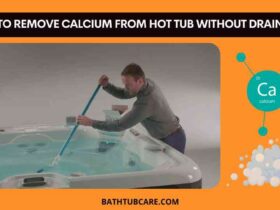


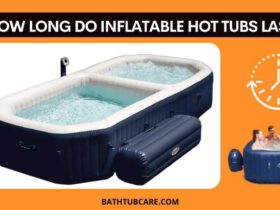

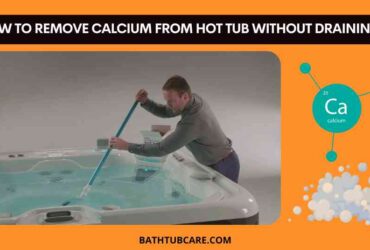
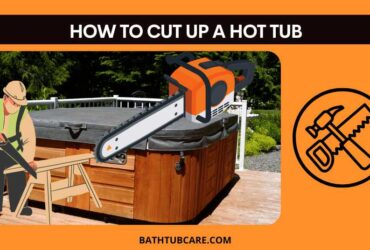

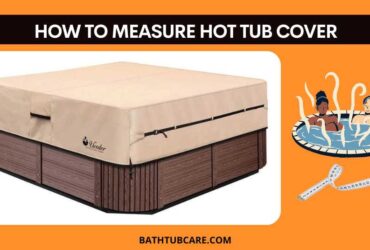
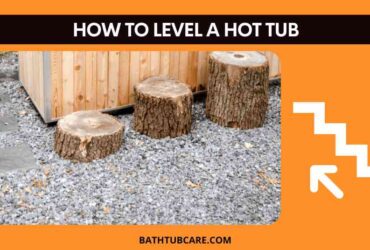

Leave a Reply